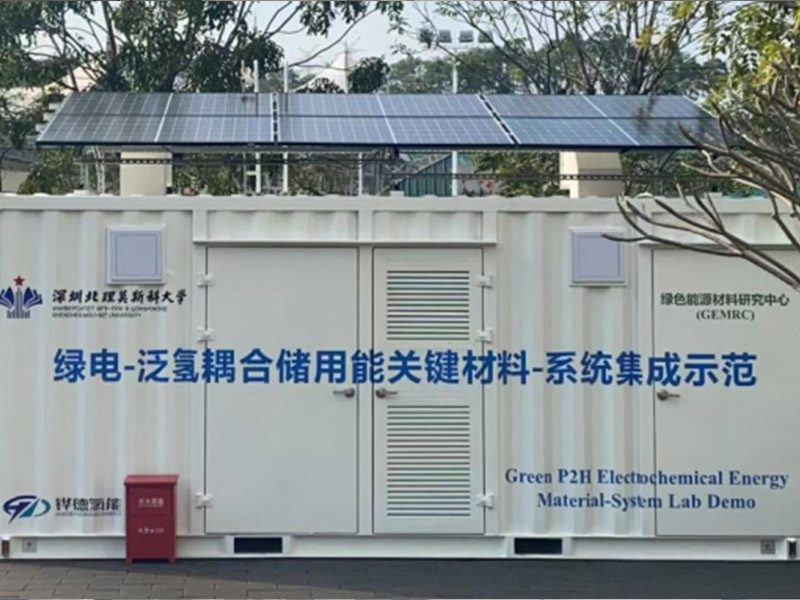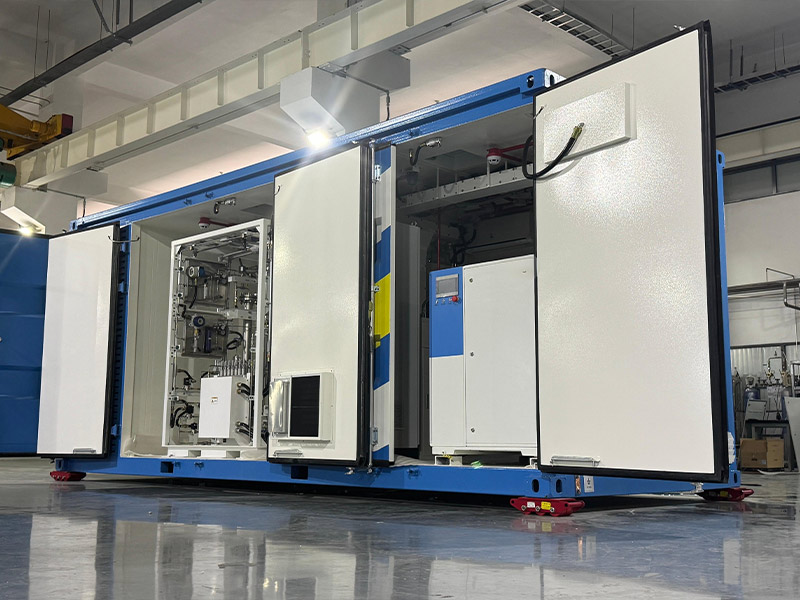Hydrogen energy is often tuted as the fuel of the future—and for good reason. It’s clean, abundant, and can be used in everything from cars to power plants. But beyond the basics, there’s much more to this energy source than meets the eye. Whether you’re an energy enthusiast or just beginning to explore renewable alternatives, these five surprising facts about hydrogen energy might just change the way you see it.

Keypoints
l Hydrogen is the universe's most abundant element but requires energy-intensive processes to isolate for fuel use.
l When utilized in fuel cells, hydrogen produces only water vapor and heat, making it a zero-emission energy source.
l Hydrogen serves as a long-term storage solution for renewable energy, addressing intermittency issues in solar and wind power.
l Practical hydrogen applications already exist worldwide, from residential power systems to public transportation and aviation.
l Hydrogen energy production methods vary in environmental impact, with "green hydrogen" from renewables being the cleanest option.
Hydrogen makes up approximately 75% of the universe’s elemental mass, making it the most abundant element by far. It’s present in water (H₂O), hydrocarbons, and even in the human body. However, pure hydrogen gas (H₂) doesn’t exist freely in nature in large quantities. That’s because it tends to bond with other elements.
To use hydrogen as a fuel, it must be separated from compounds—usually through processes like electrolysis (splitting water using electricity) or steam methane reforming. These processes require energy, which is why producing green hydrogen (using renewable electricity) is seen as an essential step for building a sustainable hydrogen economy.
One of the biggest advantages of hydrogen energy is its zero-emission output. When hydrogen is used in a fuel cell, it combines with oxygen from the air to produce electricity, heat, and water vapor—that’s it. There are no carbon dioxide (CO₂) emissions, nitrogen oxides, or fine particulate matter.
This makes hydrogen an incredibly attractive option for clean transportation, green homehydrogen energy storage, and even industrial heating. For countries aiming to meet aggressive carbon neutrality goals, hydrogen is a key enabler of deep decarbonization—especially in sectors where batteries are less efficient, such as heavy trucking or steel production.
One of the biggest challenges with solar and wind energy is intermittency—the sun doesn’t always shine, and the wind doesn’t always blow. This is where hydrogen steps in as a long-term energy storage solution.
When renewable energy is abundant, it can be used to power electrolyzers that convert water into hydrogen. That hydrogen can then be stored and later reconverted into electricity when demand spikes or generation drops. Unlike batteries that may only store energy for a few hours or days, hydrogen can be stored for months, making it ideal for seasonal energy balancing.
During periods of excess renewable energy production, that electricity can be used to generate hydrogen through electrolysis. The hydrogen can then be stored for days, weeks, or even months, and converted back to electricity when needed. This energy storage potential makes hydrogen a critical piece of the puzzle in achieving reliable, 100% renewable energy grids.
While hydrogen is often associated with futuristic technologies, it is already being used in real-world applications. In Japan, over 400,000 homes are powered by residential hydrogen fuel cell units as part of the Ene-Farm project. Germany, South Korea, and California are also advancing hydrogen infrastructure with hydrogen-powered buses, trains, and power plants.
Some companies are even building entire hydrogen villages and neighborhoods where fuel cells generate electricity and heat for daily use, proving that hydrogen is more than just a concept—it's an active solution today.

You may have heard of green hydrogen, but did you know hydrogen comes in various “colors,” depending on how it’s produced? These color labels are used to indicate the environmental impact of hydrogen production:
l Green hydrogen: Made using renewable energy and electrolysis. It's the cleanest form.
l Blue hydrogen: Produced from natural gas with carbon capture and storage (CCS).
l Grey hydrogen: Made from fossil fuels without capturing emissions—most common today.
l Pink hydrogen: Generated using nuclear energy.
l Turquoise hydrogen: Created by pyrolysis of methane, producing solid carbon as a byproduct.
Not all hydrogen is created equal! The color code reveals its environmental impact:
|
Type |
Source |
CO2 Emissions |
|
Grey |
Natural gas (current standard) |
High |
|
Blue |
Natural gas + carbon capture |
Reduced |
|
Green |
Solar/wind-powered electrolysis |
Zero |
|
Pink |
Nuclear-powered electrolysis |
Low |
Understanding the “color” of hydrogen is essential when evaluating its sustainability and carbon footprint. While green hydrogen is the ultimate goal, scaling it up will take continued investment and innovation.
Hydrogen has been powering space missions since the 1960s. NASA uses liquid hydrogen as a rocket fuel, thanks to its high energy content and clean combustion. Now, aviation companies are looking to hydrogen to decarbonize air travel. Airbus, for example, has announced plans to develop hydrogen-powered commercial aircraft by 2035.
Hydrogen’s light weight and high energy density make it an ideal candidate for fueling aircraft and spacecraft, pushing the boundaries of where clean energy can go—literally.
Hydrogen energy may still be developing in some regions, but its benefits are undeniable. It’s clean, abundant, versatile, and ready to integrate with the world’s growing demand for sustainable energy. From powering homes to flying airplanes, hydrogen is proving itself as more than just a futuristic dream—it's a surprising and practical energy solution for today and tomorrow.
Only green hydrogen (made with renewable energy) is 100% clean. Grey hydrogen (from natural gas) emits CO₂, while blue hydrogen captures most emissions.
High costs ($50,000+ per vehicle), limited fueling stations (~1,000 globally), and competition with electric batteries slow adoption.
Modern hydrogen systems use safe storage (reinforced tanks) and leak detectors. It’s no riskier than gasoline when handled properly.
Producing affordable green hydrogen. It needs cheap solar/wind power and scaled-up electrolyzers.
As a compressed gas, supercooled liquid, or bound in carriers like ammonia or metal hydrides.
Unlikely soon, but it could dominate trucking, shipping, and aviation where batteries fall short.
Electrolysis uses water, but 1 kg of H₂ needs just 9 liters—far less than fossil fuel extraction.


